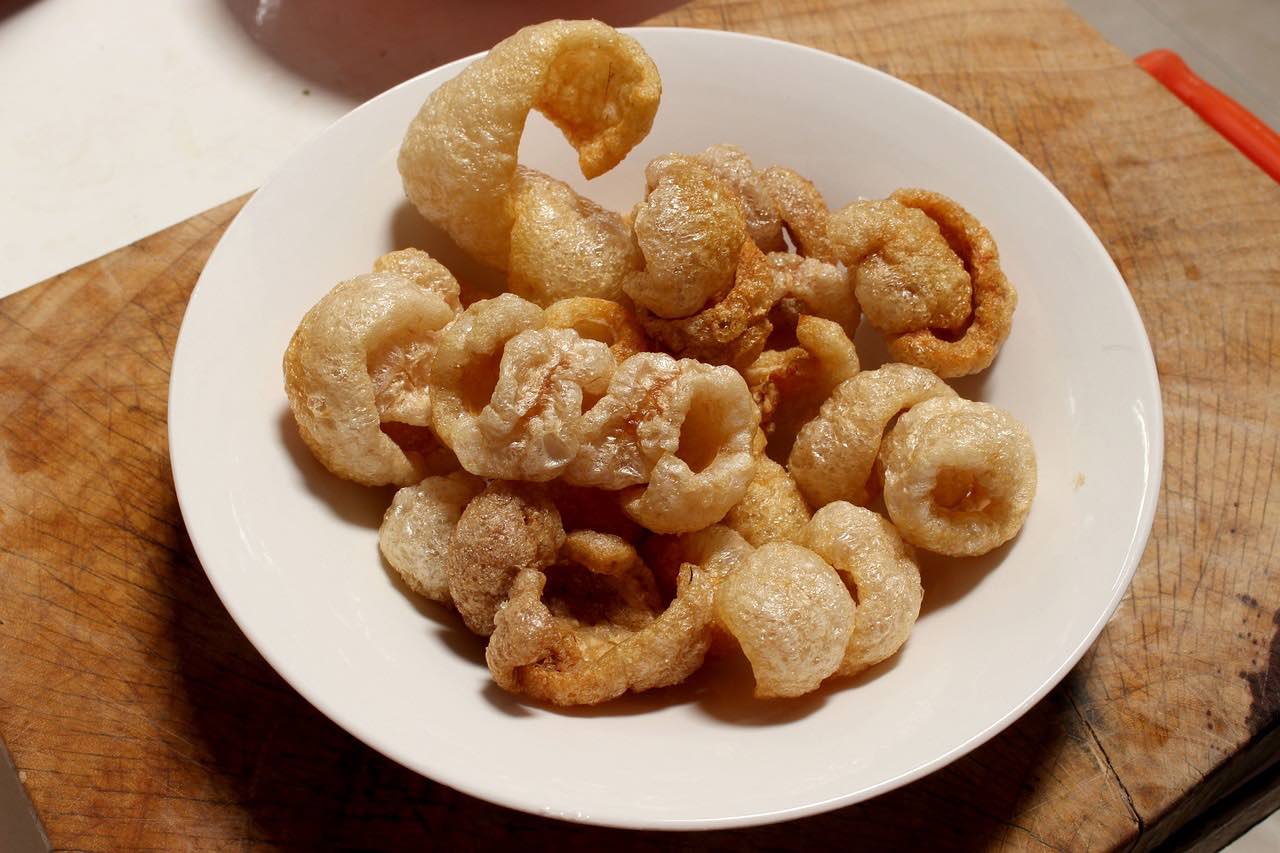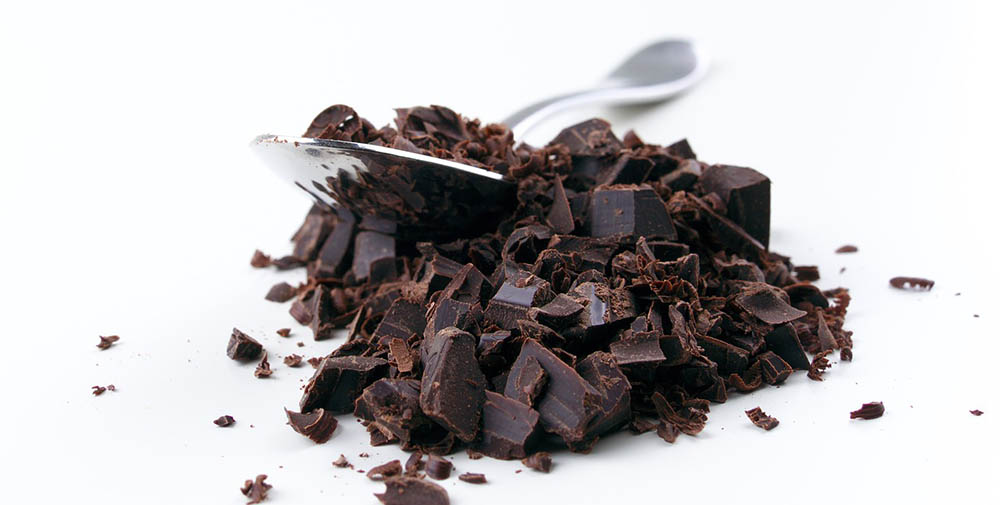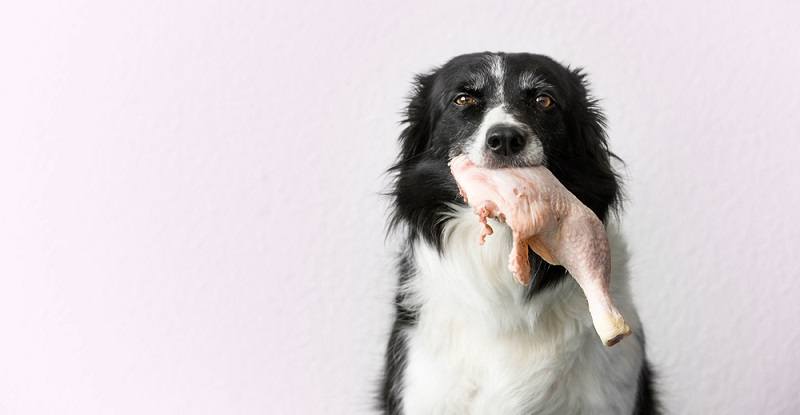Pork rinds are a crunchy and salty snack made specifically for us humans, but have you ever wondered if it would be okay to feed some to your dog? Has she been watching you oh so carefully every time you reach into that bag and place one into your mouth?
Are pork rinds safe for your dog to eat? The short answer is no! Pork rinds are not considered a safe snack and should not be fed to your dog.
About Pork Rinds
Pork rinds are a popular snack around the world; in Mexico, they are called chicharrones, and in the U.K., they are pork scratchings.
Pork rinds are made from pork skin that has been first boiled and scraped to remove any extra fat attached, so only the skin remains. The skin is then cut into smaller, bite-sized pieces and dehydrated until it is dry and brittle. The last step is deep-frying the skin until it is crunchy and puffed up and is typically seasoned with salt and pepper. They are also available in other flavors such as salt and vinegar, barbecue, and cinnamon-sugar.

Pork rinds are high in fat and protein, and they’re also carb-free, which will entice those who are following a low carb diet.
However, they don’t have much else to them. No vitamins or minerals; they lack fiber and are very high in sodium. The U.S. Dietary Guidelines recommends less than 2,300 mg of sodium per day, and 2 ounces of pork rinds sits at about half of the daily limit (1,040 mg).
There are also certain brands of pork rinds that include artificial colors and flavors, or ingredients like monosodium glutamate (MSG).
Pork Rinds and Your Health
The main concern with a diet that includes pork rinds is it contributes to weight gain as they are quite high in calories and fat. Excess weight can also lead to diabetes and heart disease. A diet that’s high in sodium may increase blood pressure, resulting in heart and kidney disease as well as stroke.
This is not to say that eating pork rinds will guarantee these diseases, but their lack of any nutritional value and the high fat and sodium content makes them a snack that should only be eaten in moderation.
In general, it is clear that pork rinds are not a terribly healthy snack for us humans, but what about dogs?
Pork Rinds and Your Dog
We’ve established that pork rinds are exclusively made for humans and aren’t the healthiest snack out there, but what does this mean for your dog?
You should always be wary of feeding anything to your dog that has been made specifically for people. Much of our food contains ingredients that are not only bad for your dog but may even be toxic.
The same ingredients that are not good for us are also not good for your dog, so any food that is high in salt and fat will be a bad snack for your dog.

The Downside of Pork Rinds for Dogs
We’re now going to break down the reasons why you should avoid giving your dog pork rinds in greater detail.
Fried Snack
As already discussed, part of the process of making pork rinds involves deep-frying, which can lead to an upset stomach and diarrhea. If your dog is consistently given high-fat foods, this can cause pancreatitis, which is a severe condition that, if not treated, will result in death.
Some signs of pancreatitis include:
- Extreme lethargy
- Severe dehydration
- Stomach pain
- Vomiting
- Loss of appetite
- Occasionally collapse and shock
If your dog exhibits any of these symptoms, take her to the vet immediately.
Ingredients and Seasonings
Pork rinds come with a variety of seasonings that are not good for your dog. If you have spicy pork rinds, you should be aware that spicy foods are generally toxic for dogs. It can lead to stomach upset, including diarrhea, pain, and excess gas but can also cause excessive thirst in your dog.
If the seasonings on the pork rinds include garlic or onions, these are also seasonings that are toxic for dogs. Again, these ingredients can contribute to diarrhea, upset stomach and can even lead to anemia.
High Salt Content
As previously discussed, pork rinds are high in salt, and if this excessive salt is bad for people, then it is just as bad for dogs. Excess sodium can make your dog extremely thirsty and will eventually contribute to kidney damage and sodium ion poisoning.
Some of the symptoms that your dog may have ingested too much sodium include:
- Depression
- Diarrhea and vomiting
- Fever
- Tremors and seizures
If you determine that your dog is exhibiting any or all of these symptoms after eating pork rinds or any other salty food, take her to your vet as soon as possible.
Allergic Reaction
Dogs are just as prone to food allergies as humans, and pork can be one of the meats that can cause an allergic reaction in dogs that haven’t eaten it before.
These are some of the symptoms of an allergic reaction:
- Diarrhea and vomiting
- Stomach cramps and excessive gas
- Excessive scratching and licking
- Red and infected skin
- Bald spots and itchy skin
- Hot spots
- Ear infections
If your dog has eaten any pork rinds, keep an eye on her. If you start to notice any of these symptoms a few hours after she ingested them, contact your vet.

Conclusion
They are not the healthiest snack for humans, which makes it even worse when your dog eats pork rinds. They are quite high in salt and fat, which we know can contribute to more serious conditions like pancreatitis and salt poisoning. The seasonings on top of the unhealthy pork rinds can also contain ingredients that are toxic to dogs. If your dog is prone to food allergies or has a sensitive stomach, these are additional reasons to keep pork rinds away from her.
If your dog doesn’t have any health problems and eats one or two, and it’s only once in a while, chances are she’ll be just fine, but wouldn’t you rather be safe than sorry? Providing your dog with a diet and snacks that she enjoys and is also beneficial for her is essential for keeping your dog happy and in optimal health.
Featured Image Credit: Pixabay







